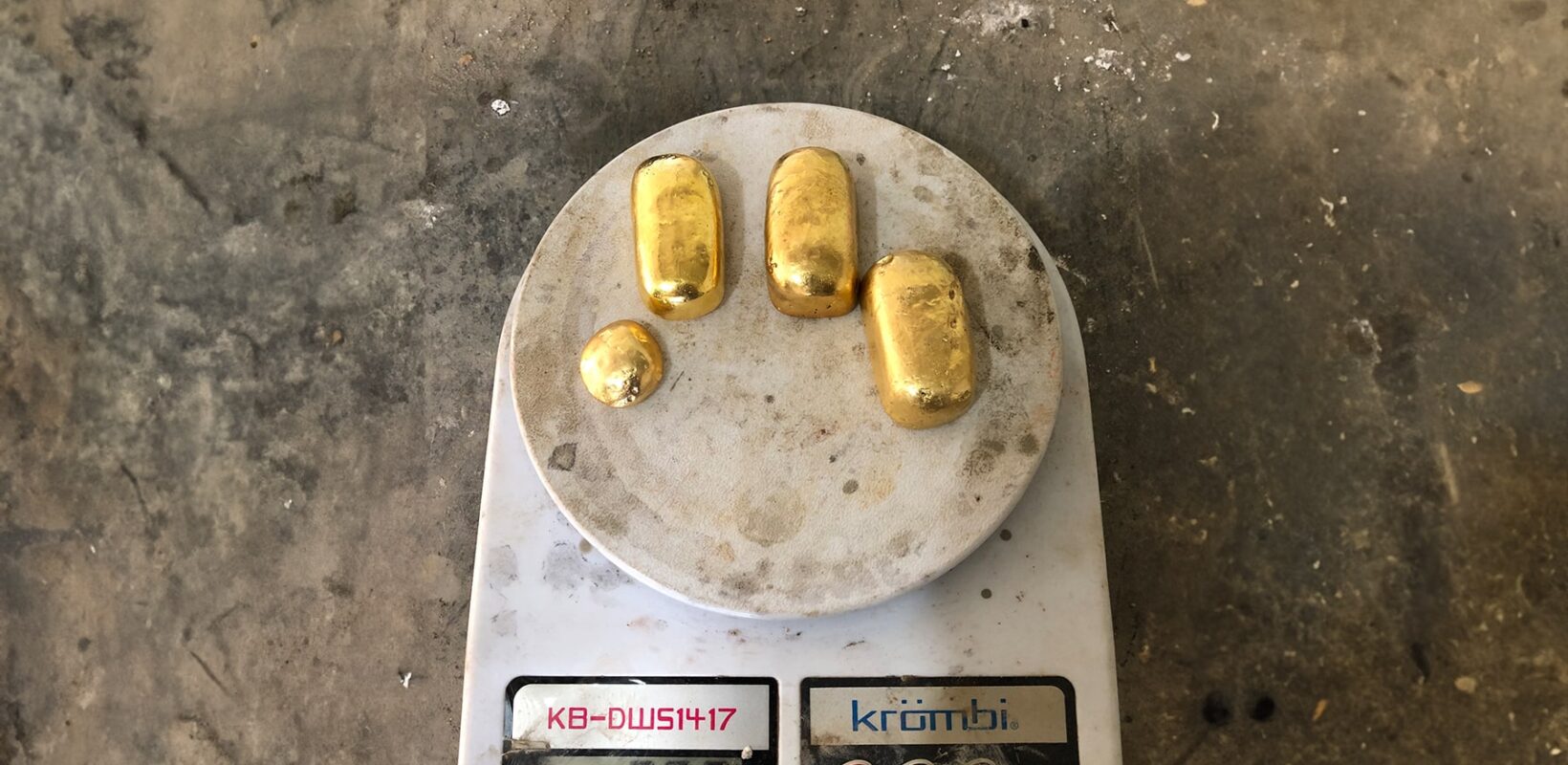
Banning mercury use in ASGM – Is it that simple?
As gold-sourcing companies set stipulations banning the use of mercury from their Artisanal and Small-Scale Gold Mining (ASGM) supply chains, we ask: is that realistic? In this Insight, with a focus on Latin American supply chains, we explore some of the complexities around the mercury issue and the unintended consequences of banning it. We conclude that implementing risk-based due diligence processes that set more realistic expectations may, in many cases, represent a more practical and feasible way forward in building responsible ASGM supply chains that work to the benefit of the people who depend on them for their livelihoods.
Mercury use and hazardous ASGM practices
Mercury is toxic to the nervous, digestive and immune systems, and to lungs, kidneys, skin and eyes; the symptoms it causes are essentially untreatable. In 2013, the Minamata Convention on Mercury emerged as a global treaty aimed at safeguarding both human well-being and the environment from the harmful impacts of mercury exposure. The treaty primarily targeted ASGM, the single biggest contributor to anthropogenic mercury pollution, and where mercury is widely used in mineral processing due to ease of use, low cost, and speed of recovery.
The crux of the issue is a prevalent, yet inefficient processing practice known as “whole ore amalgamation” (WOA). In remote processing centres, such as the ‘entables’ in Colombia, the entirety of the crushed ore is placed in direct contact with mercury. In Brazil, this is seen as miners run ground material over mercury plates. In Chile, mercury and ore are placed in wheeled grinding machines called ‘rastras,’ and in Colombia, the world’s highest emitter per capita, through small ball mills called ‘cocos’.

‘Cocos’ being used to process gold in an artisanal processing plant in Colombia.
WOA is often preferred by processors to exploit the processing waste, or ‘tailings’, because WOA has a low recovery rate that rarely exceeds 30%. This is due to the ‘flouring’ of the mercury in grinding, causing it to lose its coalescence and end in the tailings. The practice enables processors to obtain gold rich material without incurring any of the exploration or mining risks.
After processing, a solid mercury-gold amalgam is removed from the recuperated mercury. This is often burned in the open air to vaporise the mercury, polluting nearby areas. Mercury exposure is exacerbated by processors using more sophisticated cyanidation techniques which methylates the mercury in the tailings. This is a far more bioavailable form of mercury and has been reported in carnivorous fish in the Brazilian Amazon.
WOA processors wield significant influence in the ASGM supply chain, extending beyond merely extracting gold from its ore. Without intervention from stakeholders such as policymakers and downstream purchasers, they can capitalise on miners’ limited access to alternatives. Engaging processors is essential to breaking the cycle and supporting responsible ASGM supply chains.
Mercury bans – What are the unintended consequences?
It can be argued that some efforts to ‘clean’ the supply chain, such as calls to ban mercury in mining and to formalise miners in order to tax them, may be misplaced. Without the necessary capacity building or provision of other processing options, an outright ban may bring unintended consequences: it risks pushing miners unable to transition away from mercury into illicit engagement. As long as processors benefit from the exploitative whole-ore amalgamation-based supply chain, it will be facilitated by any means. In turn, mercury is pushed into a black market that creates a niche for illicit importers and traders who provide mercury in exchange for buying the gold at a discount. This black market for mercury may be a boon for criminal networks such as drug cartels, who could leverage this to purchase and illegally export cheap gold for money laundering. One of many high-profile examples of drug cartels’ involvement in the gold trade is the Miami-based NTR Metals case in 2017, while the USA is known to remain an important destination for illicit Latin American gold.
Phasing out mercury rather than banning may be a better approach but there is a need for active engagement and economic incentives
The solution to the mercury problem needs to prioritise education, acknowledge that the transition is phased, and be nurtured through active engagement and economic incentivisation. Various approaches have been proposed.
Converting WOA processors into mercury-free systems has been pitched by some stakeholders as the panacea for all mercury-related issues. However, mercury-free systems are capital intensive, require technical assistance, and availability of service to continue operating. Achieving longevity in this context demands a delicate balance between the interests of miners, government and investors.
An alternative and potentially more effective solution involves connecting miners to sophisticated cyanidation processing, potentially in an ore-buying business model, where miners are better compensated, and responsible processing companies can access high-grade material. This would shorten the supply chain by removing WOA processors and eliminate the role of mercury. However, considering that in many jurisdictions ASGM sites are often distant from formal processing facilities such a model can have practical and economic limitations.
A more realistic approach acknowledges that with responsible use, mercury can be an effective tool, albeit one that ultimately should be phased out. If WOA centres can be improved to amalgamate only concentrates and use locally manufacturable retorts, the mercury emissions would be reduced to insignificant amounts. Such centres would also be useful training sites against improper mercury use, helping to prevent miners from resorting to their old ways. Coupled with a risk-based due diligence approach among gold buyers, this could create new opportunities for accessing formal markets and thereby offer economic incentives.
As demand for responsible gold increases, there are more organisations offering certifications acknowledging mercury’s role before being phased out. Fairmined™ for example is driving artisanal and small-scale mining organisations (ASMOs) to implement better environmental management, health and safety practices. This includes a commitment to phasing mercury out and miners are being rewarded for that commitment when they achieve certification. Certified ASMOs are benefitting from capacity building opportunities and a price premium when selling gold internationally, which allows them to reinvest into projects that benefit their workers and mining towns. The benefits have been evidenced in Peru, which has the greatest number of certified ASMOs in Latin America.
Reported benefits include safeguarding the rights and working conditions of miners, preventing the use of child labour, and mitigating the environmental impact of mining activities. Responsible and ethical mining practices should be at the forefront of any strategy aimed at transitioning away from mercury use, thereby ensuring not only a cleaner and safer industry but also a more just and equitable one for parties involved.
Mercury and responsible sourcing- where do we go from here?
As the responsible sourcing landscape evolves, with emerging policies such as the EU Corporate Sustainability Due Diligence Directive (CS3D) and calls for transparency, businesses are facing mounting pressures to embed more responsible practices into their supply chains. This does not stop at jurisdictions in which responsibility is not a legal compliance requirement – being responsible, in essence, requires cross-border efforts to mitigate existing negative impacts and prevent future impacts. In pursuit of progress, there are often challenges and compromises that need to be made, such as corporate positions on responsible mercury use, to move forward and eventually arrive at intended endgame of phasing out mercury use altogether. In the current landscape of regulatory requirements and ever-increasing stakeholder expectations, ignoring difficult challenges such as this is no longer an option.

